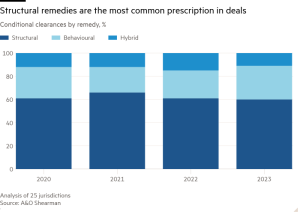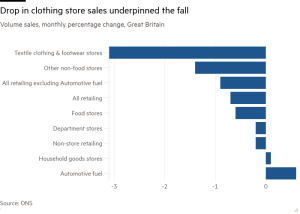Iran’s defence budget set to soar as regional tensions rise
Unlock the Editor’s Digest for free
Roula Khalaf, Editor of the FT, selects her favourite stories in this weekly newsletter.
Iran is set to drastically expand its defence budget for the coming fiscal year, following a recent exchange of missile fire with Israel that has heightened the risk of broader conflict across the Middle East.
Government spokesperson Fatemeh Mohajerani said on Tuesday that the administration had recommended a 200 per cent increase in next year’s defence allocation to the parliament, without disclosing further details.
For this fiscal year, Iran’s total defence spending was about $8bn in current dollar rates.
The 2024 budget for military institutions — covering all branches from the elite Islamic Revolutionary Guard Corps to the conventional army and national police — was set at 2,530tn rials. The figure amounts to about $4bn based on open market rates this week. The rial has depreciated by 17 per cent against the dollar since January, when the 2024 budget was proposed.
Just over $2.1bn in current dollar terms was allocated “to strengthen military might” — a reference to the purchase and development of weapons.
An additional €1.8bn, or $1.94bn, was allocated for the “promotion of sustainable security” from oil revenues.
It was unclear whether Mohajerani’s remarks referred to the entire budget for all defence spending, or specifically that set aside for “military might”.
Parliament this week preliminarily approved a total proposed budget of 64,000tn rials, or roughly $100bn at open market rates, for the coming fiscal year, which begins in March.
Iran’s defence strategy heavily depends on domestic arms production, with limited transparency surrounding overall military expenditure. Support for regional proxies is kept outside public accounts, with Tehran consistently prioritising these alliances as part of its strategy for regional influence and defence against perceived US and Israeli threats.
In recent years, Iran has increased its ballistic missile capabilities and maintained support for militant groups in Lebanon, Iraq, Syria and Yemen. The country’s leadership views these initiatives as critical to national security, believing any retreat might embolden foreign conspiracies for regime change.
Despite plans for a significant budget increase, Iran’s military spending remains modest compared with other regional powers.
According to the Stockholm International Peace Research Institute, Iran’s 2023 military expenditure was only the fourth-highest in the Middle East. It was less than half of that of Israel and dwarfed by the biggest spender in the region — Saudi Arabia.
Iran’s reliance on oil and gas exports remains central to its fiscal health.
Combined revenues from oil and gas sectors are projected at 21,000tn rials, or $32bn based on open market rates this week, with crude oil production expected to reach 3.75mn barrels a day, priced at an estimated €57.5 a barrel in the government’s calculations.
Iran’s economy is also burdened by high inflation, with current rates near 35 per cent. The budget anticipates inflation will fall to 28 per cent next year.
President Masoud Pezeshkian, in office since July, has repeatedly voiced concerns over the financial pressures his administration faces, largely as a result of US sanctions that restrict Iran’s oil revenues.
The currency’s recent depreciation, following Iran’s missile attack on Israel earlier this month, underscores the economic strain. The exchange rate remains volatile as tensions with Israel continue.
#Irans #defence #budget #set #soar #regional #tensions #rise




